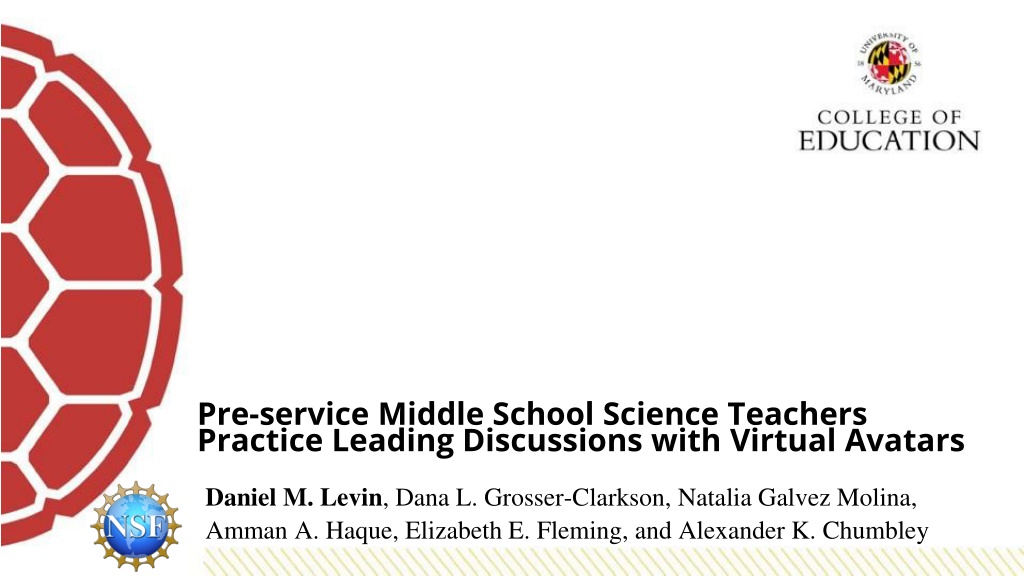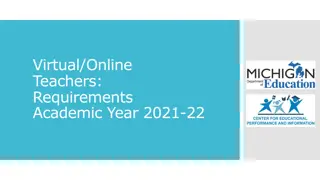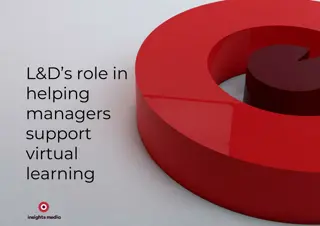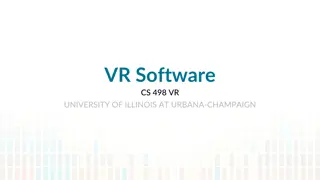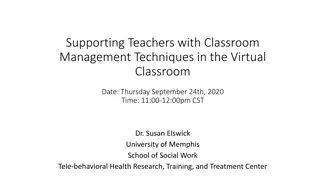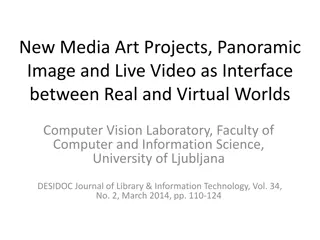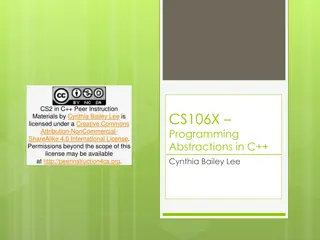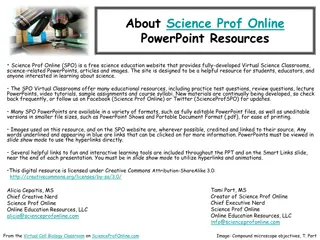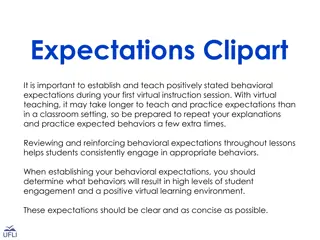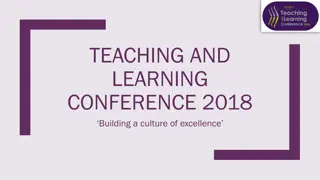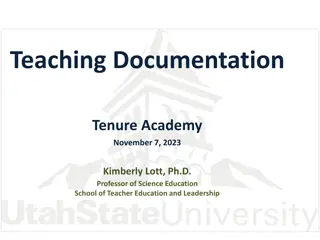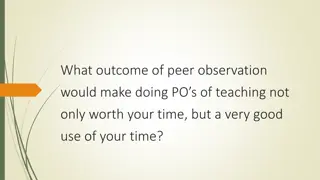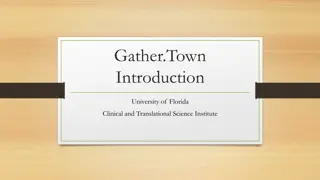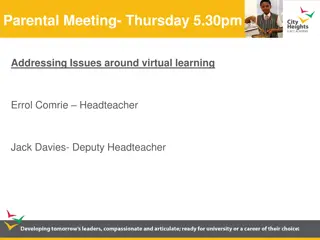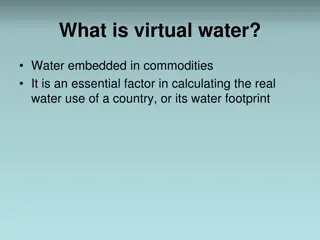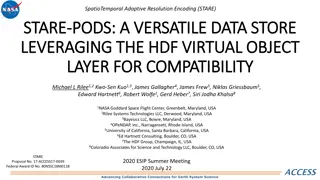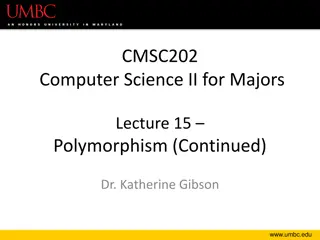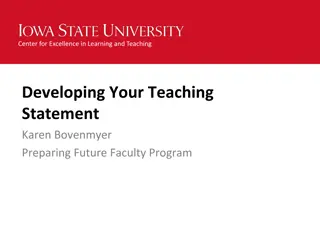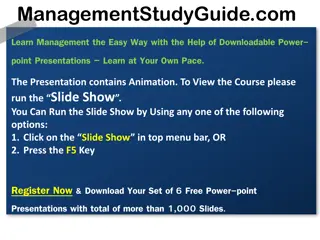Enhancing Science Teaching Practices Through Virtual Avatar Discussions
Pre-service middle school science teachers engage in practice sessions using virtual avatars to lead discussions on natural phenomena. The use of avatars provides a safe environment for attending to and responding to ideas and reasoning. This innovative approach aligns with high-leverage teaching practices, focusing on eliciting and responding to student thinking. The simulation activities aim to develop teachers' competencies in facilitating discussions and exploring scientific explanations with students.
Download Presentation

Please find below an Image/Link to download the presentation.
The content on the website is provided AS IS for your information and personal use only. It may not be sold, licensed, or shared on other websites without obtaining consent from the author. Download presentation by click this link. If you encounter any issues during the download, it is possible that the publisher has removed the file from their server.
E N D
Presentation Transcript
Pre-service Middle School Science Teachers Practice Leading Discussions with Virtual Avatars Daniel M. Levin, Dana L. Grosser-Clarkson, Natalia Galvez Molina, Amman A. Haque, Elizabeth E. Fleming, and Alexander K. Chumbley
Use model PSTs approximate practice of leading discussion about natural phenomena and responding to avatars thinking (Example: What causes grass to smell when it s freshly cut?) Intended to provide practice in attending and responding to ideas and reason in a safe setting ( kayaking in calm waters ; Grossman et al., 2009) Prior course activities include pedagogies of PBTE (McDonald et al., 2013) in this and related practices
Simulation Instructions to Mursion What causes the grass to smell when it s freshly cut? Background Avatars have been studying plants. They have been taught different parts of the plant. They also previously studied animals and animal adaptations. Exemplar Responses When grass is cut, it gives off chemicals that can travel into the air and to our noses. Some of these chemicals promote wound healing and others act like antibiotics. Some other plants also give off toxic compounds when cut. Anticipations. The avatars might: 1. Recognize the possibility that chemicals or some other substances are being released. Although they may not see that this has some sort of function. 2. Some might think it functions as a defense mechanism, but others might ask why it doesn t hurt cows. 3. Avatars might say it comes from juices inside the grass. 4. Some may simply say that the plant is being disturbed. 5. Some might say that the smell is due to a chemical coming out of the lawnmower. 6. Someone might mention that it can stain their shoes green. 7. Some might argue that the smell is coming from the ground, not the grass. 8. Some might notice that it smells sometimes after a rain and think it has something to do with water. 9. Someone might say it s just the smell from inside the grass . 10. Someone might think the smell is to attract other species that might come to prey on something that is attacking the grass.
Components of the Use Model Modeling, Representing, and Decomposing Practice Lesson Planning with Discussion, Anticipating Avatar Anticipating Avatars! Interview Analysis Other Course Activities
Theory of Action Teacher learning as situated and interactional (Russ, Sherin, & Sherin, 2015) High-leverage (core) practices of teaching (Grossman, et al., 2009; teachingworks.org teachingworks.org) Practice-based teacher education (McDonald, et al., 2013) Leading discussion (Ball & Forzani, 2009; Duschl & Gitomer, 1997) Connected to practices of eliciting and responding, undergirded by attention to students thinking (Levin et al., 2009; Neel, 2015; Robertson et al., 2016; Sherin, Jacobs, & Philipp, 2011) Focus on scientific practices of constructing and critiquing explanations for phenomena (Ford, 2010; NGSS, 2013)
Research Questions In what ways were PSTs similar and different in eliciting and responding to avatar student thinking? (whole class patterns) In what ways were PSTs goals for the discussion connected to their practices? (cases of individual PSTs)
Methods Data Sources Field notes, video recordings, transcripts of each session (RQ1) PSTs written analysis of discussions (RQ2) Data Analysis (RQ1) Deductive codes (Miles, Huberman, & Soldana, 2013) derived from Pierson s (2008) study of responsiveness among secondary mathematics teachers Responsiveness (L, M, HI, HII) Intellectual Demand (IGL, IGH, IDL, IDH) Coded each meaningful, content relevant response (responsiveness and ID code) Two authors coded 8 of 26 transcripts chosen randomly to calculate inter-rater reliability. Agreement was 79%, and rose to 85% for HII/IDH codes, which made up 40% of all codes Highlighted row(s) or column(s) capturing at least 50% of codes to characterize profiles (Fleming, Grosser-Clarkson, & Levin, 2018)
Methods contd Data Analysis (RQ2) Analyzed three PSTs discussions in more depth Inductive and interpretive (Maxwell, 2013) Conducted interaction analysis (Jordan & Henderson, 2005) Watch segments together, discussing PSTs responsive practice and apparent goals Triangulated our interpretations with PSTs expressed goals in their analysis
Learnings (RQ1) Student First Avatar Profile Second Avatar Profile Questions 1. [ Alexa ] An Arlene Courtnee Dean Evan Kelly James [ Matt ] [ Nina ] Nomi Sabine Sharon Fraction RL Fraction IDL Fraction HII Fraction IDH Fraction HII/IDH Grass Snow Rainbows Snow Snow Snow Grass Snow Grass Grass Snow Snow Rainbows HII/IDH L HII/IDH HII/IDH L/IDL L IDH IDL -- HII/IDH HII L/IDL -- 4/13 3/13 6/13 5/13 4/13 Snow Rainbows Grass Rainbows Leaves Leaves Leaves Leaves Rainbows Rainbows Leaves Rainbows Leaves HII/IDH IDL HII/IDH HII/IDH L IDH HII/IDH HII/IDH IDL HII/IDH HII/IDH L/IDL IDH 2/13 3/13 7/13 9/13 6/13 What causes the grass to smell when it s freshly cut? What causes it to snow? What causes rainbows? What causes leaves to change color? 2. 3. 4. Whole class data (Three selected PST names are bracketed and lines bolded)
Learnings (RQ1) contd High II Matt (Rainbows) Alexa (Grass) Low/No Medium High I Low/No Medium High I High II Give Low 0 0 0 0 Give Low 0 2 0 0 Give High 0 0 1 0 Give High 0 0 0 1 Demand Low 1 0 0 0 Demand Low 8 7 7 0 Demand High 4 0 3 14 Demand High 0 0 0 11 Tina (Grass) Low/No Medium High I High II Give Low 0 1 4 0 Give High 0 0 0 2 Demand Low 6 5 0 0 Demand High 0 2 3 24
Learnings (RQ2) Alexa Alternating probing and guiding (HII --> HI) Agree or disagree? : pressing for consensus Most of my facilitation was focused on the goal of getting students to respond to each other s thinking and to really listen to what they are saying Matt Tina Difficulty launching question Tendency to choose particular ideas or insert his own (HI --> HII) Consistent with stated goal of identifying entities (factors) Soft launch , (e.g., Who has seen a rainbow? When/where do you see it? ) Progression toward drawing on student ideas to collaboratively construct an explanation Comfortable to share (e.g., Tang, 2010); consistent with stated goals
Learnings (Summary) It s possible to distinguish broad profiles of responsiveness Many PSTs can respond to student ideas while facilitating construction and critique of explanations for phenomena Few Give codes likely reflects Being told not to tell (Chazan & Ball, 1999) PSTs practice is aligned with their observed (inferred) and stated goals
Implications and Future Directions The approximation not only supports PSTs practice but also serves as a valuable assessment to inform classroom supervision What accounts for differences among PSTs' responsiveness? Goals? Beliefs? Anxiety? Develop instructional goals profiles (Mikeska, personal communication) Ongoing research into case study participants responsive practice in student teaching and beyond (Levin et al., 2019)
